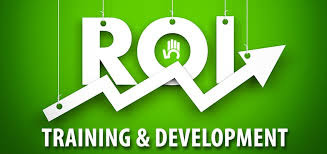Sharper Skills, Stronger Performance: The Direct Link Between Training and Success
Imagine a surgeon operating for the first time, relying
solely on textbooks and lectures, or a pilot attempting their first takeoff
without flight training. Can imagine the result? In the professional world, the
same principle applies. There's a direct, undeniable relationship between
training and job performance.
Why Training Matters
Think of training as equipping your employees with the tools
and knowledge they need to shine. It allows uplift the potentials as follows;
- Grasp core skills- Effective training programs bridge the gap between theoretical knowledge and practical application of skills specific to the job. Whether it's mastering software, learning technical procedures, or honing communication techniques, training equips employees to handle their tasks efficiently.
- Boost confidence -When employees feel adequately trained, they approach their work with greater confidence. They're less likely to hesitate or make mistakes, leading to a more decisive and productive work style.
- Adapt to change - The world of work is constantly evolving. Training programs that address new technologies, industry trends, and best practices ensure employees stay relevant and adaptable. This is crucial for businesses to maintain a competitive edge.
- Improve problem-solving- Well-designed training programs encourage critical thinking and problem-solving skills. Employees learn to analyze situations, identify potential issues, and develop effective solutions, fostering a culture of independent initiative.
- Increase motivation- Investing in employee development shows a commitment to their growth and success. This fosters a sense of value and motivation, leading to higher engagement and a more positive work environment.
Beyond the Basics- Making Training Effective
Training isn't a one-size-fits-all solution. To unlock its
potential and enhance job performance, there are some main considerations to
making effective training,
- Needs Assessment- Identify specific skill gaps within your workforce. What are the current challenges employees face? Tailor training programs to address those needs for maximum impact.
- Variety is Key- Don't rely solely on traditional classroom-style learning. Incorporate interactive workshops, simulations, e-learning modules, or mentorship programs to cater to different learning styles and preferences.
- Ongoing Support- Learning doesn't stop after the training program ends. Offer ongoing support systems, access to resources, and opportunities for continuous learning to reinforce acquired skills.
- Measure and Adapt- Track the effectiveness of your training programs. Are employees applying their new skills? Is performance improving? Continuously assess and refine your training approach based on data and feedback.
The ROI of Investing in Training
Investing in training isn't just an expense. it's a strategic
investment in your company's future. Studies have shown a clear link between
employee training and positive outcomes and industry experts practice this secret.
(Made in America with Ari Santiago,2019)
Some outcomes are as follows;
Increased productivity- Employees with the right skills
can complete tasks faster and with fewer errors, leading to increased output.
Reduced costs - Proper training can minimize errors,
rework, and accidents, resulting in cost savings for the organization.
Improved customer satisfaction - Well-trained employees
are better equipped to handle customer inquiries effectively, leading to higher
customer satisfaction and loyalty.
Reduced employee turnover- Employees who feel valued and
invested in their company are more likely to stay engaged and committed,
leading to lower turnover rates.
The Final Word
In today's competitive landscape, a skilled and well-trained
workforce is a company's greatest asset. By investing in training and
development programs, organizations empower their employees to perform at their
best, achieve better results, and ultimately, drive the success of the
business. Remember, training isn't a luxury, it's a necessity for any company
aiming for long-term success.
Reference List
Made in America with Ari Santiago (2019) Why You Should Invest
in Employee Training [video]. Available from https://www.youtube.com/watch?v=SsZAiLmEje8
[accessed on 12.04.2024]



Investing in staff training fosters motivation, flexibility, and confidence in addition to improving abilities. The importance of training in improving job performance and fostering long-term organizational success is emphasized in this essay.
ReplyDeleteAdding on above ,pros: Investing in training yields enhanced performance, fosters innovation, boosts employee engagement, and provides a competitive advantage.
ReplyDeleteCons: Training can be costly and time-consuming, may not always be effective, and could face resistance from employees.
I acknowledge your concern regarding the cons.
DeleteThis article brilliantly emphasizes the vital connection between training and job performance, likening it to the crucial preparation needed for surgeons and pilots. It highlights how training empowers employees with essential skills, boosts confidence, and fosters adaptability, all of which are pivotal for success in today's dynamic work environment. The actionable tips provided for effective training, along with real-world outcomes like increased productivity and reduced turnover, underscore the tangible benefits of investing in employee development. Indeed, training isn't just an expense but a strategic investment that drives long-term success and competitiveness.
ReplyDelete